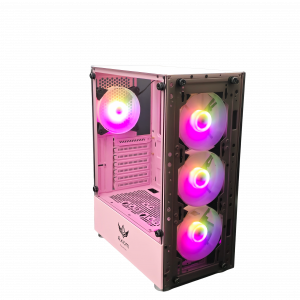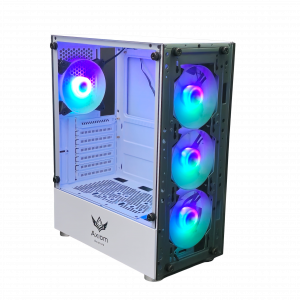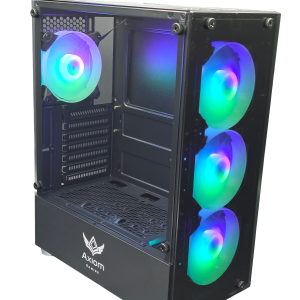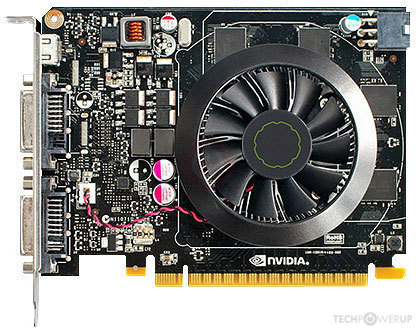The NVIDIA GeForce GTX 650 was released in 2012 as part of the GeForce 600 series, based on NVIDIA’s Kepler architecture. Designed as an entry-level GPU, the GTX 650 provided decent gaming performance for its time without breaking the bank. It became popular among budget-conscious gamers and casual PC users looking for an upgrade from integrated graphics. In this article, we’ll take a closer look at the GTX 650’s specifications, performance, and its relevance today.
Key Specifications of the GTX 650
To understand what the GTX 650 brought to the table, here’s a quick rundown of its specs:
- Architecture: Kepler
- CUDA Cores: 384
- Base Clock Speed: 1058 MHz
- Memory: 1GB or 2GB GDDR5
- Memory Interface: 128-bit
- Memory Bandwidth: 80 GB/s
- TDP: 64 watts
The GTX 650 was built for efficient performance in a compact and low-power design. Its GDDR5 memory, faster than DDR3 memory seen in some other budget GPUs, gave it a boost in gaming and multimedia applications. With a TDP of only 64 watts, it didn’t require extra power connectors, making it easy to install in most pre-built systems with limited power supplies.
Performance: A Balance Between Power and Price
While the GTX 650 wasn’t meant to compete with high-end GPUs, it delivered respectable performance for its price. Here’s how it performed in various scenarios:
1. Casual Gaming and eSports Titles
The GTX 650 excelled in running popular, less-demanding games. Titles like League of Legends, Counter-Strike: Global Offensive, and Dota 2 could run at medium to high settings with smooth frame rates, even at 1080p resolution. For many budget gamers focused on multiplayer online games, the GTX 650 was a cost-effective solution.
2. AAA Games (2012-2014)
For AAA games of its time, such as Far Cry 3, Assassin’s Creed III, and Tomb Raider, the GTX 650 managed playable frame rates at lower settings. At 1080p resolution, it was best to keep settings on low to medium to achieve smoother gameplay, especially in scenes with complex graphics.
3. Everyday Multimedia Use
Beyond gaming, the GTX 650 was an ideal upgrade for users looking to improve overall performance for everyday tasks like HD video playback, photo editing, and light content creation. Its CUDA cores could also assist in GPU-accelerated tasks, making it useful for basic video editing and processing in programs that support CUDA.
Kepler Architecture and Energy Efficiency
The GTX 650 was built on NVIDIA’s Kepler architecture, which improved performance-per-watt efficiency compared to previous generations. Key benefits of Kepler included:
- Energy Efficiency: The Kepler architecture allowed the GTX 650 to maintain respectable performance without excessive power consumption. This made it ideal for smaller systems and setups with limited power supplies.
- CUDA Support: The 384 CUDA cores enabled the GTX 650 to handle light computational tasks, like GPU-accelerated rendering, making it a useful choice for creators and tinkerers working within a budget.
While Kepler was eventually surpassed by Maxwell and Pascal architectures, it laid the foundation for power efficiency in GPUs, which NVIDIA would continue to refine.
GTX 650 Today: Is It Still Worth Using?
Though the GTX 650 is now a legacy card, it can still be found in older systems and retro gaming setups. Here’s how it holds up in different scenarios today:
- Retro and Indie Gaming: The GTX 650 can still manage many indie games and retro titles, which are less graphically demanding and run well on lower-end hardware.
- Casual Office Use: The GTX 650’s support for multiple monitors and HD playback makes it suitable for productivity and multimedia tasks, making it a viable choice for basic office systems.
- Streaming and Media Consumption: The GTX 650 can handle HD video playback smoothly, making it useful in setups intended for streaming or media consumption.
Comparing the GTX 650 to Modern Entry-Level GPUs
Today’s budget GPUs, such as the NVIDIA GT 1030 or AMD Radeon RX 550, significantly outperform the GTX 650, providing better frame rates, higher memory speeds, and improved architecture efficiency. If you’re building a budget system for light gaming today, these newer models are a better investment, as they can handle modern titles with more ease and efficiency.
Conclusion
The NVIDIA GeForce GTX 650 remains a nostalgic piece of hardware, representing a time when budget-friendly gaming became more accessible. With its balance of performance and price, the GTX 650 provided casual gamers and multimedia users an affordable upgrade from integrated graphics. Although it’s no longer suitable for modern AAA titles, the GTX 650 still has its place in legacy systems and basic productivity setups.
For those interested in retro gaming or light multimedia tasks, the GTX 650 can still be a functional option, reminding us of the incremental steps in GPU technology. If you’re upgrading today, though, more recent entry-level GPUs will provide significantly better value and performance. The GTX 650 may be past its prime, but it played an essential role in making quality graphics accessible to more users, leaving a small yet significant mark in GPU history.






